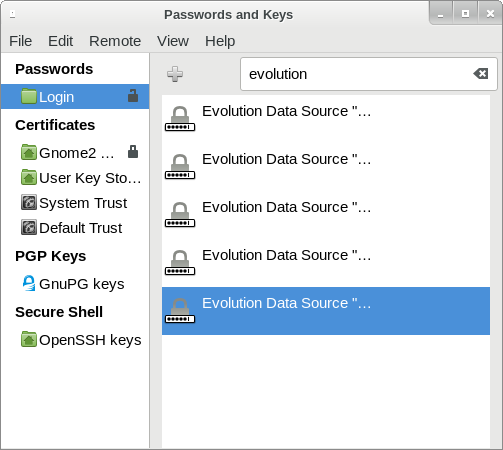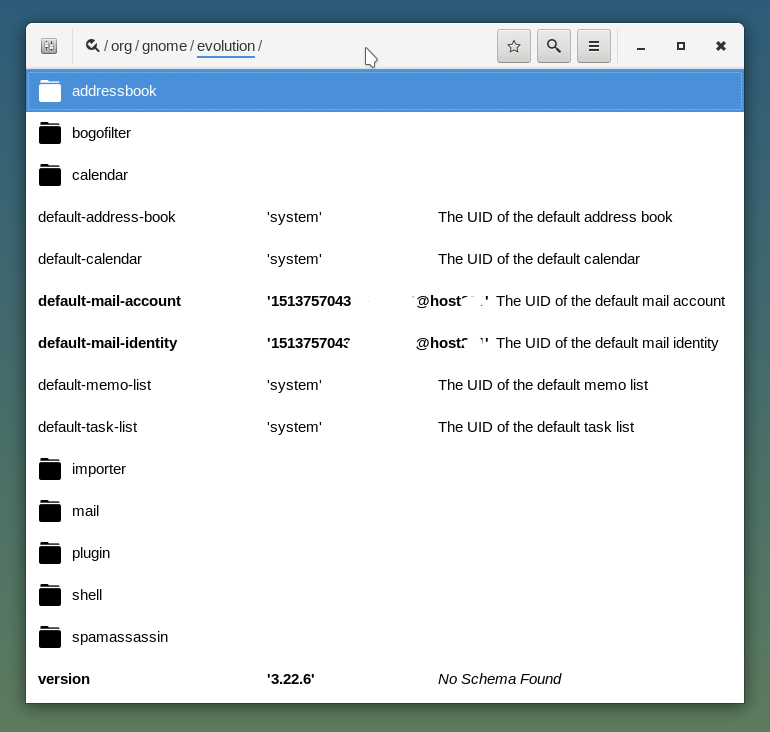Where Does Evolution Save Its Data and Configuration Files on Linux?
Posted on In Linux, Software, Tutorial, WebEvolution is a great personal information management tool that provides Email, address book and calendar tools. Evolution provides many enterprise friendly feature such as native support to Microsoft Exchange connectivity for Emails, address books and calendars. Evolution uses various ways including plain files and dconf configuration systems. This post will give an introduction to the common locations or paths where Evolution stores its data and configuration files in Linux. Understanding of where Evolution stores configuration and data files is an important step to use and manage Evolution effectively, such as avoiding storing Email files in insecure storage locations if your Emails are sensitive and should be stored securely such as on encrypted storage systems.
Table of Contents
Passwords in Evolution
Emails are critical for many users and the security of the stored password is a big concern for using a tool that stores the passwords. Evolution uses GNOME Keyring to store the passwords for your accounts. GNOME Keyring has an encrypted secrets storage that is integrated with the user’s login and the secret storage will be unlocked after the user logins into Linux.
If you would like to see the passwords saved, invoke seahorse to view and manage the saved passwords.
Configuration settings in Evolution
Evolution since version 3.6 stores files according to the XDG Base Directory Specification which defines the directories and environment variables for configuration and data files paths. Here, we discuss the default values for Evolution using default values of XDG Base Directory Specification.
Configuration and state files
Configuration and state files are stored under
$HOME/.config/evolution/Among the configuration files, the account settings are under
$HOME/.config/evolution/sources/Configuration files for keyboard shortcuts
One confusing part using Evolution I found was how to check all the keyboard shortcuts and how to configure them. Evolution provides a shortcuts reference PDF. But it only provides a set of common ones besides of the many more others Evolution supports.
After some searching, it is found out that Evolution stores the keyboard shortcuts under a plain text file at
$HOME/.config/evolution/accelswhich is a GtkAccelMap map file.
Configuration settings in GSettings/dconf
Evolution uses GSettings/dconf (which store files under $HOME/.config/dconf) to save some of its configurations.
To view the settings in GSettings, you may use the dconf-editor GUI tool to find the path for Evolution. One example is /org/gnome/evolution/ as follows.
Evolution data files and caches
Evolution stores the user’s data files such as contacts and calendars under the data files dir
$HOME/.local/share/evolution/Under the data files dir, you may find directories like calendar, addressbook and tasks.
As common networked tools, Evolution caches some data to “hide” from users the latency caused by network. Evolution stores disposable data caches under
$HOME/.cache/evolution/For example, if you are using imap, in the mail dir you can find cached and stored Email files.
That’s most of the common configuration files and settings paths Evolution use to store configuration and data. Hope this post could give you a basic understanding of the locations where Evolution store its data so that you can use Evolution more effectively. Enjoy!



Hello,
is it possible to change the location of mail data, as it is consuming a lot of space? How to do that?
Regards
Hello,
I need to change the port number of the pop server from 110 to 995. But it keeps changing back to 110